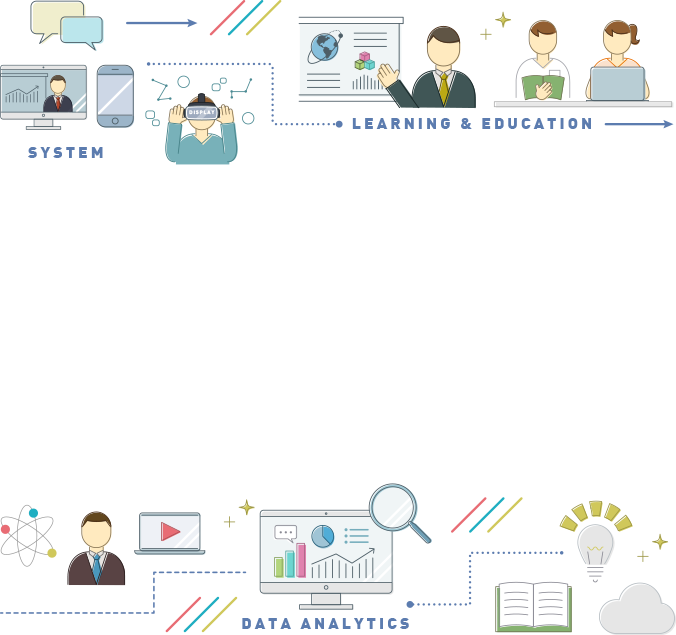Hello, I am Saki Hirata, a second-year master student.
Here is the paper I chose for the first English seminar in the new academic year.
Journal title: Beyond self-directed computer-assisted pronunciation learning: a qualitative investigation of a collaborative approach
Author: Pi-hua Tsai
Publication year: 2019
Source: Computer Assisted Language Learning, 32:7, 713-744,.
Correct pronunciation is an important component of smooth communication.
Pronunciation learning requires feedback to determine whether one’s pronunciation is correct, and in recent years, feedback methods such as scoring and graphing of pronunciation using computer speech recognition technology have attracted attention.
This paper examined how learners perceive computer feedback when learning pronunciation. It also investigated what pronunciation difficulties they experienced during the learning process and how they assisted each other and other learners in their learning.
In the study, 60 university students were paired up for 10 weeks of computer-based pronunciation learning. The software used in the study was called MyET, which provides feedback in the form of phoneme and pitch grades, waveform data, and 3D data showing mouth shape through speech recognition. During the experiment, how participants learned was observed through the experiment, and questionnaires and open-ended statements were administered before and after the learning session to provide feedback on the system and on the paired learning.
The results of the survey revealed two types of interaction patterns in the pair activities: “novice/expert interaction” and “cooperative interaction”. In the former, when the novice side was unable to improve the problem in the system, the expert side teach how to pronounce it to the novice side. On the other side, in the cooperative interaction, students in pairs checked each other’s pronunciation and sought solutions together to overcome the problem. In addition, in the “cooperative interaction” pattern, the participants appeared to enjoy working together with their peers, which may lead to increased motivation for pronunciation learning.
The results of the questionnaire also showed that positive opinions about computer learning outweighed negative ones. Specifically, positive responses included “vowel length,” “pitch variation,” and “text and graph” feedback; conversely, negative responses included “model pronunciation too fast,” “inconsistent and unconvincing pronunciation scoring,” “vague On the other hand, negative responses included “the models are pronounced too fast,” “pronunciation scoring is inconsistent and unsatisfactory,” and “vague comments (e.g., try to pronounce at a higher pitch) without clear suggestions for correction.
Finally, it was found that learners’ difficulty with phonemes was reduced after learning pronunciation on the computer, pointing to the effectiveness of 3D animation as a method of phoneme feedback. Furthermore, when asked if more pronunciation practice with a computer would improve their pronunciation skills, 80% of the respondents answered “yes”.
In conclusion, technology and human feedback are complementary in supporting pronunciation learning. Learning with peers is seen as a feedback-giving activity, which may encourage correction of pronunciation problems that cannot be solved by individual study.
From now, I will talk about why I chose this paper. In this January, I conducted an evaluation experiment of my application for pronunciation training, and through the log analysis of the experiment, I found that learners have difficulty solving their pronunciation problems by themselves. Therefore, I wanted to collect useful information about how to design a system that can solve pronunciation problems.
After reading the paper, I found three main points helpful.
First, since many students recognized that Collaboration leads to improved pronunciation, it is expected that pronunciation ability will improve through activities in which students monitor each other’s pronunciation and search for ways to improve it. If this activity is completed by the system alone, for example, the system can act as a peer to identify pronunciation problems and ask specific questions that lead to improvement, based on the results of speech recognition. In this case, it is important to have a system that provides feedback on how to correct phonemes, intonation, accent, and other elements of pronunciation, as this study did.
Second, it was mentioned that the input should be authentic in order to promote intrinsic motivation of the learner. In this regard, I felt that even in my system, I need to select words that are close to the learner’s context in order to motivate learning.
Third, regarding feedback, visual feedback, such as highlighting (e.g., coloring, transcription, highlighting/underlining) areas of mispronunciation or displaying waveform data or images, would also be effective.
On the other hand, we had several questions about this study.
First, since the quantitative effects of the system on pronunciation ability were not shown, I felt that the objectivity and reliability regarding the effectiveness of the cooperative learning method and CAPT feedback proposed in this study were low. Also, since there is no interpretation of the system’s learning logs, our knowledge of the specific learning behaviors of CAPT is thin. Finally, we found that the COLLABORATION pattern can improve learning motivation, but the way the pairs are made is important to achieve this pattern of cooperative learning. In addition to selecting students of similar academic ability, factors such as personality compatibility are also likely to be involved. If the characteristics of the pairs had been mentioned, this paper would have been an even more interesting finding.







